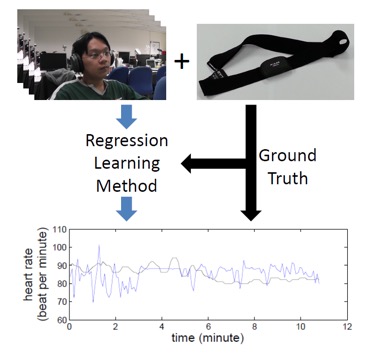Learning-based Heart Rate Detection from Remote Photoplethysmography Features
Remote photoplethysmography (rPPG) enables measuring heart rate from recorded skin color variations with consumer cameras. Recent research has aimed to improve the signal strength of color variations caused by heart beat by using independent component analysis (ICA) technique or analyzing chrominance-based model. In this paper, we argue for treating this emerging problem in a novel aspect – proposing a learning-based framework to accommodate multiple and temporal feature and yielding significant and robust improvement. Using support vector regression (SVR) on published chrominance-based feature improves the root mean square error (RMSE) from 22.7 to 7.31 as well as correlation coefficient (CC) from 0.30 to 0.77. With proposed novel multiple feature fusion and multiple segment fusion techniques, we achieved the best estimation result with RMSE 5.48 and CC 0.88. Meanwhile, the proposed framework can be extended to other promising features.
